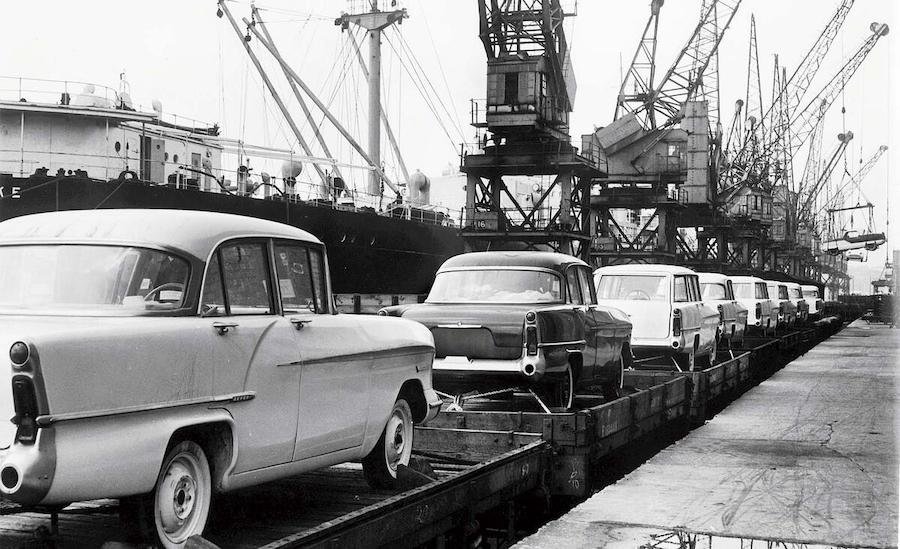"If you chance upon a new Austin with foreign numberplates, it isn’t really chance at all. For since the war tens of thousands of Austins have gone abroad. Why so? Two reasons mainly.
"First, because Austins are very properly known as the dependable cars. Second, because there’s something young and very lively about them.”
Those words are from May 1957, but not words written by Autocar, rather Austin itself, in an advert featuring the Swiss scene pictured above. Were they truthful?
For the answer, flick through the same magazine to find a ‘neutral analysis’ of British cars’ foreign prospects by Swiss journalist Robert Braunschweig.
He wrote: “For a number of post-war years, the British industry’s export figures were far higher, both in absolute figures and in proportion to their total production, than those of their competitors.
"The spectacular rise of the German industry and, lately, the very much increased export activity of the French and Italian firms have changed the situation in many markets where British firms had enjoyed freedom of action. In addition, many economical and political barriers have been erected in countries which formerly absorbed British cars without restriction.
Enjoy full acccess to the complete Autocar archive at themagazineshop.com
“The very successes of the post-war years created problems for the British firms. Whereas the general scarcity of cars made sales very easy, their quality and durability was not always entirely satisfactory. Non-British [cars], with which these were replaced in the early 1950s, did not suffer from these defects. Even today the after-effect of this period has not been overcome entirely.
“The British industry alone offers nearly as many different models as all its competitors taken together. Not all categories seem equally well represented, however, and there is a notable absence of vehicles capable of holding their own against the [burgeoning] new minicar class.
"There’s another lack of choice in the light medium-sized category, where only two British models have to carry the weight of battle against seven Continental models. But in all other classes, the British industry is numerically well represented.
“It seems the various national industries tend to improve features in which they have always excelled [and] find it much more difficult to make progress in [other areas]. Thus the power, sweet running and reliability of British engines have even more improved of late.
"The interior dimensions and the appointments of the medium-sized British car are unsurpassed today as much as in the past. [But] a different situation prevails [regarding] handling and riding. Beyond any shadow of doubt, the behaviour of [British cars is] much better in their native ground than anywhere else.
“Even styling is subject to geographical influences. In England, the reticent and often slightly conservative styling of even some of the newest cars is in keeping with their surroundings, and some of the Continental cars which one has praised seem rather crude and blatant; but back home the refined British saloons suddenly seen rather old-fashioned and drab.
“As far as prices are concerned, [British cars] are not badly placed. This is not always the case, however, [as regards] actual export prices. Whereas some industries enjoy substantial export assistance from their governments, this does not appear to be the case [in Britain].
“These ideas seem to show that the status quo can be maintained without undue effort. Winning back lost markets, however, requires a prolonged and nearly superhuman effort from all concerned.”
You may be expecting this article to end with damning, depressing stats – but not quite. In 1957, Britain built 0.86m cars and exported 0.43m. Production peaked at 1.9m in 1972, but just 0.61m went abroad.
Both metrics sank thereafter, bottoming out at 0.9m and 0.2m in 1984. But they soared back up again through the 1990s and in 2016 peaked at 1.7m and 1.35m. Covid seriously damaged the industry’s health, of course, but it has recovered before and has both the ability and the opportunity to do so again.
Related News

